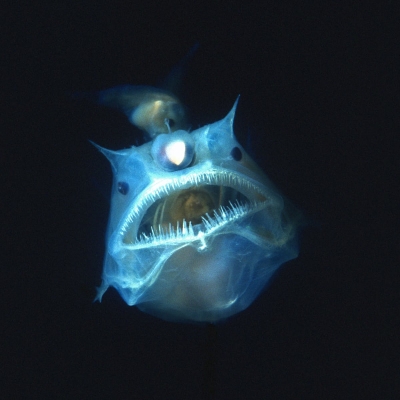
Deep down in the oceans it is pitch-black. You cannot see a thing without artificial light, because sunlight cannot penetrate further than 460 metres below the surface. This could be a serious problem for fish living so deep, if they did not have lights of their own.
Some, like the angler fish, use light to catch their prey. The rat-tail fish sends out a cloud of light to dazzle an enemy while it makes a speedy getaway. Then there are those who use light just to keep in touch with friends and find a mate. They have ‘recognition lights’, rather like ships.
The light produced in these fish is like no other light on earth. For one thing, it’s cold. Almost every other sort of light we know of produces heat. Being cold makes it very energy efficient. Some fish produce their light by mixing chemicals with a little oxygen from their blood. These meet in glands in the fish’s skin. The chemicals form a combustion and light is produce in the gland, which turns into a lamp.
In other oceanic fish bacteria produce the light. The bacteria live and feed on tissue in the fish’s skin, which the fish is constantly replacing. However, the bacteria help the fish by producing substances that glow with bright light. So while the fish helps them, they help the fish.
Picture Credit : Google



